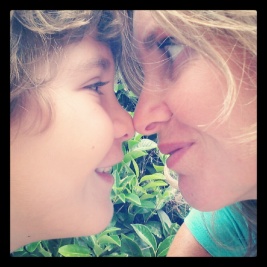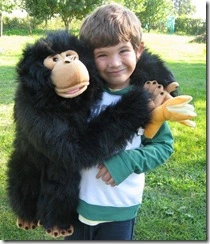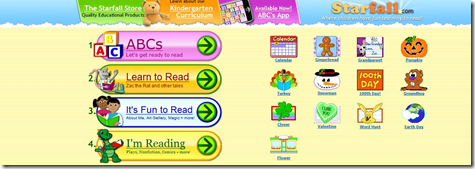Your first lesson teaching children English using Theatre is an important one because it’s where you present yourself for the first time and depending on that first impression will determine if students decide to enrol in your courses or not. It’s really a make or break situation.
So how do you initially break the ice with young children and prepare them for a fun filled lesson of language learning?
Category Archives: ESL-Drama- games
The Sticky Game

The Sticky Game
Welcome back! I hope you all had a great summer break. I thought you might be interested in a fun and simple warm up game to start off the new term. I often use this “ice-breaker” with new classes as it not only familiarizes children with the different parts of the body but it also encourages them to jump around to music and overcome any initial embarrassment or shyness they may have in relating to a new group.
Level: All
Age group: 3+ (ideal also with adults)
Time: 5 min
Aims: To introduce and practice body vocabulary e.g nose, ears, back, knees, hands, shoulders etc:
This game should be played in pairs. You will need some lively music to play. Ask the children to stand back to back and tell them, or better still demonstrate to them that they are “super glued” together and they must dance and move to the music without ever becoming “unstuck” from their partner. Call out different body parts that the children must “stick” to using their partner for example:
– Nose
– Feet
– Hands
– Ears
– Shoulders
– Back
– Eyelashes
– Cheeks
– Bottoms/ Backside
Continue suggesting different body parts, the faster the teacher changes words, the more hilarious the children find the game.
Happy teaching
Miranda
5 Little Monkeys Jumping on the Bed Song
To introduce this popular song to my class of 5-6 year olds I made a simple felt board out of an old cardboard box, covered and taped it with a black flannel blanket.
To make the monkeys, mummy and doctor I downloaded some materials and laminated them. It is a good idea to laminate and protect the characters and stick double sided tape to the back so they can be attached and removed easily from the felt board.
At the end of the lesson I distribute some paper monkey finger puppets or masks which the children colour, cut out and use to sing the song again during the next lesson.
Children enjoy making their own finger puppets and it is a great way to involve and engage them in reviewing numbers and new vocabulary.
As an alternative – encourage children to interpret and re-enact the song using monkey masks and simple costumes for the Mummy and Doctor characters. Bring to class some props for example toy telephones for the children to use.
*Five little monkeys jumping on the bed (hold up 5 finger puppets)
One fell off and bumped his head (make one finger puppet roll down to the floor and tap your head with your fist)
Mummy called the doctor, (hold up finger and thumb to your mouth and ear miming a telephone)
And the doctor said
No more monkeys jumping on the bed (wag your index finger from left to write to indicate no)
Four little monkeys jumping on the bed
One fell off and bumped his head
Mummy called the doctor
And the doctor said,
No more monkeys jumping on the bed
Three little monkeys jumping on the bed
One fell off and bumped his head
Mummy called the doctor
And the doctor said,
No more monkeys jumping on the bed
Two little monkeys jumping on the bed
One fell off and bumped his head
Mummy called the doctor
And the doctor said,
No more monkeys jumping on the bed
One little monkey jumping on the bed
One fell off and bumped his head
Mummy called the doctor
And the doctor said,
Put those monkeys right to bed
*Sing along to 5 Little Monkey Jumping on the Bed from Super Simple Songs
Happy teaching!
Miranda
Learn colours in English with Flashcards and Wendy the Witch
Flashcards are a great resource in English Language Lessons with children when they are used creatively. It is not enough just to hold up a card, repeat the word and expect the children to remember.
Here is an example video of how I introduce simple colour flashcards (with my young Italian students ) with the help of a friendly Witch Puppet who adores munching on the colour red!
In my next post I’ll give you some more ideas on games to play with children using colours and flashcards.
Happy Teaching
Miranda Flynn Legge
The Rainbow Song –learning colours in English
A simple activity to play in class to introduce colours
Traffic Light Game Young children love this game both being the Ferrari and the traffic Light. Aims: To introduce and practice colours red, yellow, green and Stop, Be careful, Go
- Cut out some squares 10x10cm of different coloured paper and use them as flashcards. Elicit the colours red, green and yellow.
- As you hold up each flashcard and call out the colour ask all the children to run and touch something “red”, “yellow” or green in the room it could be someone’s clothing or an object in the room. Do this a few times until the children are familiar the colours.
- Explain to the players that when you hold up the red flashcard and call out red the children must stop and freeze!
- When you hold up the yellow light and call out yellow the players must start hopping
- When you hold up the green flashcard and call out green the players can run (but no bumping into others!).
Alternative Game: to practice Stop, Be careful, Go
Explain to the children that they are all cars and mime a steering wheel using your hands and beep on the horn. Now hold up the red flashcard and tell the children that when you hold up read and call out stop they have to freeze! When you hold up the yellow light and call out be careful the cars must go very slowly and when you hold up the green flashcard they can drive very fast (but no bumping into others!).
Fruity Prepositions with Pippo the Puppet
Teach Prepositions with Pippo the Puppet
When introducing prepositions (in, on, under, in front of, behind) a puppet can be a useful teacher assistant and engaging for children.
Activity Instructions
Bring to class some fruit props (orange, pear, banana, apple, kiwi, etc) children tend to become very excited about real fruit, but plastic fruit is fine and easier to store away for future exercises:-) Place the fruit on your desk or on the floor in a circle where all the children can see it. Use an empty box (puppet size) and give your puppet instructions to carry out.
Example:
“Hello Pippo, can you show the children a banana, please? Very good Pippo.” (Pippo picks out and holds up the banana for the children to see, get the children to repeat the word and use lots of applause of encouragement both for Pippo and the children)
“Where’s the pear, please Pippo?” (Pippo picks out and holds up the pear for the children to see, and again have the children to repeat the word)
When the children become familiar with the fruit have Pippo select an incorrect fruit and get the children to correct him. Then ask for a volunteer to help Pippo choose the correct fruit. Get the other children to applaud and encourage, if the child is unsure Pippo can always hint:-)
Now give Pippo preposition instructions :
“Pippo can you put the apple on the box/chair please?”
“Pippo can you put the apple in the box/chair please?”
“Pippo can you put the apple under the box/chair please?”
Again as the children become familiar with the prepositions , have Pippo make mistakes and encourage the children to correct him.
Have a competition between a child and Pippo as to who can be the quickest in putting the banana under the box/chair. The child always wins, of course!With older children this game works well with one child competing against another but be careful with younger children as they can end up in tears, especially if they don’t win. A tried and tested lesson that guarantees laughter and group participation even for the shyest of children:-)
Have Fun!
Rusty in Tuscany. Substitute the teacher… with a puppet!
Hi I’m Rusty the Puppet. I’m from England and at the moment I’m visiting my friend Thomas in Florence, Italy. Thomas is bilingual which is a good job as my Italian is not up to scratch. The other day he took me on the new Tram to the centre of Florence where we visited Piazza Santa Maria Novella. In the background you can see the Duomo, Florence’s largest Cathedral… WOWWW ..it’s nearly as big as my mouth!.
How to teach English when you don’t know a word!
Would you like to teach your children English even if you can’t speak it well yourself?
I use this fun interactive “learning to read site” with my bilingual Italo/English 6 year old. He speaks and comprehends English well but like many bilingual children his reading and writing skills are behind. Starfall is fun as it uses phonics, stories and plays to teach and motivate children to read aloud. For non-English speaking parents or teachers you can easily follow the simple stories yourselves and click on words to reveal their correct pronunciation.
Have no fear! Puppets are positive creatures that bring about positive responses.
We are extremely happy to finally go live with our new website GoGoGenius
My husband and I decided to set up GoGoGenius as we wanted to create a special place where parents, teachers and educators could find products, tips and suggestions to help their children learn English through fun and creativity .
We are based in Florence, Italy, and we sell puppets and educational products primarily, but not exclusively, dedicated to teaching English, using fun, unconventional methods and theatre techniques.
Over the next few weeks we will be adding many more products and resources and we would love to receive any feedback from you.
Check out our puppet range as I believe they are a fantastic resource for any parent or teacher for use in educational activities such as storytelling, phonics, mathematics, and foreign language teaching.
As an English teacher, I use puppets in class on a regular basis because I have seen for myself that they work very successfully . Puppets are positive creatures that bring about positive responses. They fascinate and engage both children and adults in a special way. They capture a child’s attention and make learning fun!
Many educators shy away from using puppets not knowing really what to do with them apart from using them as a simple “doll”.
Fear not!!!!!!
I will try and give you some fundamental puppet tips and convey to you what wonderful teaching tools they really are.
Stay tuned!! Miranda’s back!!!
The object game
Many traditional drama games for adults can be easily adapted for teaching children English. The following game is great fun and all my students adore it! It encourages team work, self expression, independence, and quick thinking. Suitable from ages 5 upwards.
Call out the name of an object and the group as a whole or split into smaller groups of 4-5 have to make the shape of that object out of their own bodies, joining together in different ways while you count down slowly from ten to zero. Usually the group will find a different way of forming the object. Examples could be: numbers, letters, a car, a number, a letter, a clock, a washing machine, a fire, a happy machine, a sausage machine. Encourage the children to make a sound to accompany their machine or object. One of my children’s favourites is a birthday cake. Some children act as candles we sing Happy Birthday and I blow out the giant “body” candles and the children fall to the ground. Great fun and makes the language memorable.





